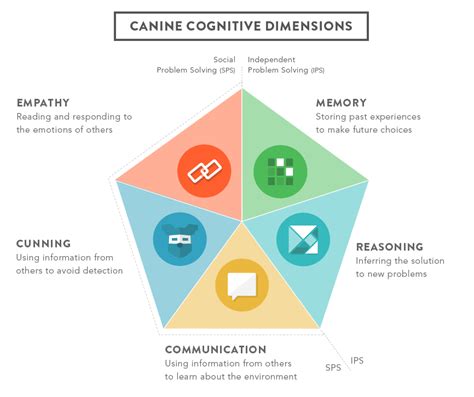Cognitive Training: A Revolutionary Approach
Cognitive training is a revolutionary approach to dog training that focuses on developing a dog’s cognitive abilities, such as problem-solving, memory, and attention span. Unlike traditional training methods, which primarily focus on obedience commands, cognitive training aims to enhance a dog’s overall intelligence and improve their ability to learn and adapt.

Benefits of Cognitive Training
According to the American Kennel Club, cognitive training has numerous benefits for dogs, including:
- Improved problem-solving skills
- Enhanced memory
- Increased attention span
- Reduced anxiety and stress
- Strengthened bond between dog and owner
Traditional Training: The Standard Approach
Traditional dog training is a well-established method that focuses on teaching dogs specific obedience commands through repetition and reinforcement. While traditional training can be effective for teaching basic commands, it may not be as effective for developing a dog’s cognitive abilities.
Limitations of Traditional Training
- Limited cognitive development
- Dogs may become overly reliant on commands
- Can be repetitive and boring for dogs
- May not be suitable for all dogs
Cognitive Training VS Traditional Training: A Comparison
| Feature | Cognitive Training | Traditional Training |
|---|---|---|
| Focus | Cognitive abilities | Obedience commands |
| Methods | Puzzles, games, problem-solving | Repetition, reinforcement |
| Benefits | Enhanced intelligence, reduced stress | Basic obedience |
| Limitations | May not be suitable for all dogs | Limited cognitive development |
Why Choose Cognitive Training?
Cognitive training offers several advantages over traditional training, including:
- Enhanced Intelligence: Cognitive training stimulates a dog’s brain, fostering cognitive development and improving their ability to learn and adapt.
- Reduced Stress and Anxiety: The mental challenges involved in cognitive training can help alleviate boredom and reduce stress and anxiety in dogs.
- Strengthened Bond: The interactive nature of cognitive training strengthens the bond between dog and owner, providing opportunities for socialization and mental stimulation.
- Tailored to Individual Needs: Cognitive training can be customized to meet the specific needs and abilities of each dog, making it suitable for dogs of all ages, breeds, and temperaments.
How to Implement Cognitive Training
Cognitive training can be implemented through a variety of activities, such as:
- Puzzle Toys: Treat-dispensing puzzles challenge a dog’s problem-solving abilities and provide mental stimulation.
- Hide-and-Seek Games: Hiding treats around the house and encouraging dogs to find them improves their memory and attention span.
- Obstacle Courses: Building obstacle courses with tunnels, ramps, and jumps challenges a dog’s physical and mental agility.
- Interactive Games: Playing interactive games like fetch or tug-of-war not only provides exercise but also enhances a dog’s social and cognitive skills.
Tips and Tricks for Cognitive Training
- Start Small: Begin with simple exercises and gradually increase difficulty to avoid overwhelming your dog.
- Keep it Fun: Make training sessions enjoyable and motivating by using high-value treats and positive reinforcement.
- Be Patient: Cognitive training requires patience and consistency. Don’t get discouraged if your dog doesn’t master exercises immediately.
- Tailor to Your Dog: Adapt training exercises to fit your dog’s individual needs, abilities, and interests.
Common Mistakes to Avoid
- Overtraining: Avoid excessive training sessions that can lead to frustration and burnout.
- Ignoring Your Dog’s Needs: Pay attention to your dog’s body language and behavior. If they seem bored or stressed, reduce the intensity of training.
- Punishing Mistakes: Punishment can damage the bond between you and your dog and hinder their learning progress.
- Neglecting Traditional Training: Cognitive training should complement traditional training, rather than replace it. Obedience commands remain important for basic communication and safety.
Conclusion
In conclusion, cognitive training is a groundbreaking approach to dog training that has numerous benefits. By enhancing a dog’s cognitive abilities, cognitive training fosters intelligence, reduces stress, strengthens the bond between dog and owner, and provides tailored training for individual needs. While traditional training remains valuable for obedience commands, cognitive training offers a comprehensive approach to developing a dog’s overall intelligence and well-being. By embracing cognitive training, dog owners can unlock the full potential of their canine companions and foster a mutually enriching relationship.





















